A study of Cornish wrestling tournaments using newspaper reports during the period 1800 to 1939 reveals that there were very few serious injuries. The most common injuries are not that surprising, with collar bones, shoulders and ribs featuring most often (see Table 1), although the largest category of injuries were unspecified, but none of these were serious. For example, in August 1924 at a tournament in Padstow the West Briton reported that ‘there were four or five accidents of a minor nature, which prevented some of the competitors finishing the bouts […] Fortunately, there were no limbs broken’. However, the most serious injury occurred in August 1935 at a Cornish wrestling tournament in Port Isaac, when Henry Paul Ralph, who was employed as a farm hand at the Cornwall Mental Hospital, in Bodmin, collapsed whilst wrestling S.M. Glover, a labourer from the Delabole quarry and died later at East Cornwall Hospital, Bodmin. A post-mortem revealed that his death was caused by a fracture at the base of his skull. The inquest returned a verdict of accidental death. The injury was the result of a heavy fall on ground which had been hardened by a spell of hot, dry weather as Cornish wrestling always took place outdoors on grass. This was the first and only recorded death at a Cornish wrestling tournament.[1]
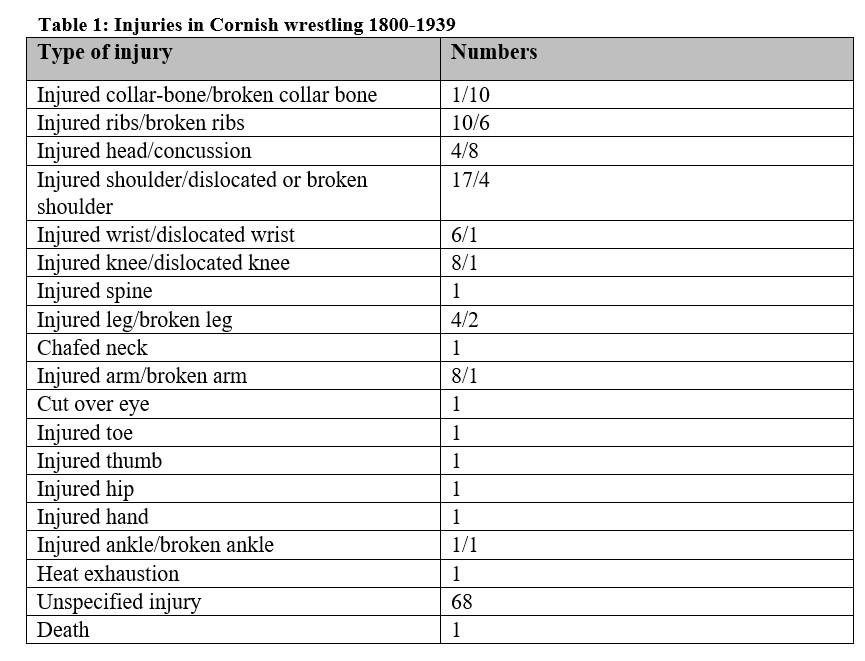
Heavy falls on hard ground were also responsible for a few cases of concussion, which at the time were not given enough serious concern as they would be today. For example, in July 1829 at a tournament in Truro, James Rowe was concussed when he was thrown by C. Friggins; he later recovered and walked home the next day. Similarly in August 1925 at a tournament in St Stephen-in-Brannel, Harry Gregory suffered concussion, but he later recovered and went home. The same wrestler was concussed at a tournament in Falmouth in July 1933, but this time he was taken to the local hospital. Organisers of tournaments occasionally felt it necessary to issue a disclaimer, as they did in August 1919 at a tournament in Truro, which stated, ‘The Committee will not hold themselves responsible for any accidents’.[2]
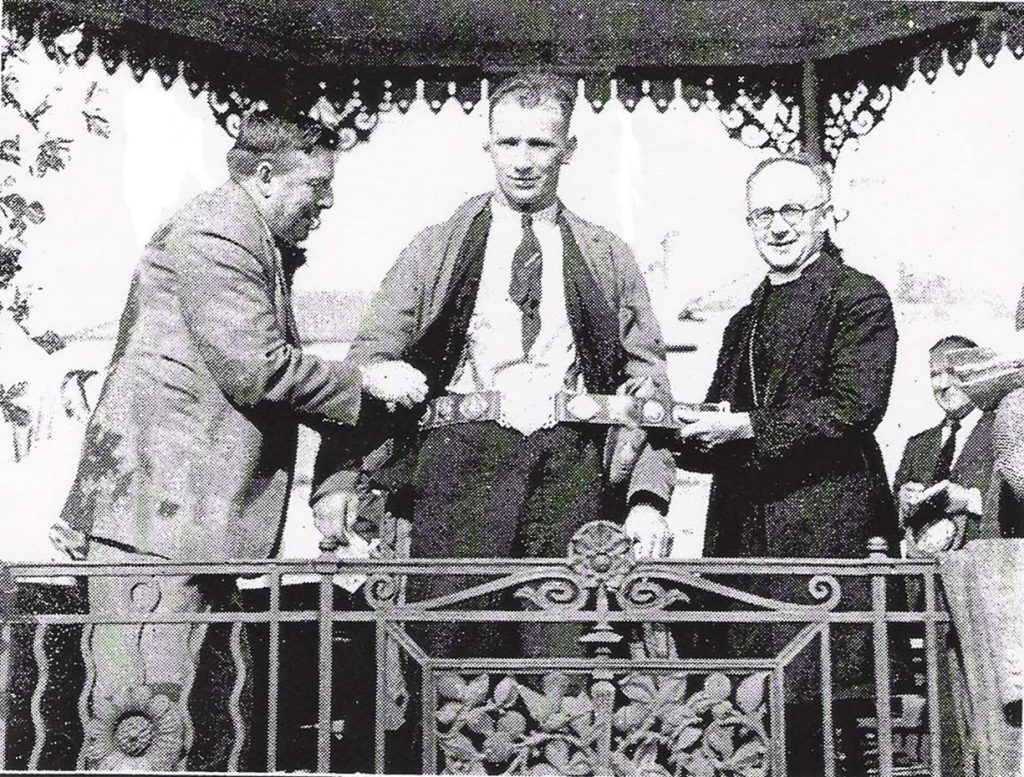
The Bishop of Truro, the Rt. Rev. Joseph Hunkin, helping to buckle on the middleweight belt won by Harry Gregory at the conclusion of the tournament at Falmouth West Briton, 30 July 1936
An unusual ‘injury’ took place in August 1933 at a tournament in St Austell, when Francis Gregory (Harry’s nephew) ‘collapsed on account of the great heat after a strenuous bout’. After receiving medical attention he went on to throw two more opponents and won the competition. Similarly, in June 1936 he was knocked unconscious in a bout in St Day against W. Phillips, who was 45 pounds lighter than him, but after treatment by ambulance men he recovered enough to win the tournament.[3]
Gregory was a talented all-round sportsman, who was rarely defeated in Cornish wrestling tournaments, including beating his opponents in seven consecutive inter-Celtic tournaments against Breton wrestlers. So reliant was the Cornish team on Gregory that when in August 1931 he fractured his ankle at a tournament in St Kew the West Briton commented that he ‘was considered one of the county’s best men for the encounter with the Bretons at the end of the month’. However, the inter-Celtic tournament was delayed until 1932 by which time Gregory had recovered and went on to win his contest. He attempted professional boxing for a few months in 1928 and played rugby union for Redruth RFC in the 1920s and 1930s, representing Cornwall eleven times between 1933 and 1935. He played professional Rugby League for both Wigan and Warrington in the late 1930s, winning one international cap for England against Wales in 1939. He also became a successful professional wrestler, adopting the name of Francis ‘St Clair’ Gregory, whose match against Mike Marino in November 1955 at West Ham Baths featured in the first professional wrestling programme to be broadcast live on British television.[4]

The team of 8 Cornish wrestlers and 2 managers that performed at the London Palladium for 2 weeks in October 1927
The 16 year old Francis Gregory is standing 3rd left
Photo courtesy of Gerry Cawley
Teams of Cornish wrestlers intermittently competed against opponents from Brittany in inter-Celtic tournaments from 1928, which took place in Brittany on four occasions and in Cornwall three times. It was possible for contests as the two styles of Cornish and Breton wrestling (or gouren) share many characteristics and have some variations, but the similarities are so many and the differences so few that it provides compelling evidence of a common ancestry. One difference however is that in gouren it is compulsory for wrestlers to control the follow-through of a throw by guiding the fall of an opponent in order to reduce the chance of injuries. However, this did not seem to be the case in 1936 in the middleweight contest at the inter-Celtic tournament in Newquay when Harry Gregory was brought hard to ground by Nicholas Clement with great force and was removed from the ring by ambulance.[5]
For wrestlers the attraction of entering tournaments were the many opportunities of winning prize money. Douglas Williams suggested that one reason why money prizes were lucrative was to compensate wrestlers for any loss of income when they needed to take time off work if they sustained any injuries.[6] It became common practice for collections to be made for any wrestlers injured, but not winning any prizes. The amount collected depended on the size and generosity of the crowd and the popularity of the wrestler. For example, in August 1924 at a tournament in Falmouth, B. Miller, a well-known boxer and footballer of Falmouth, broke his collar bone and £10 was collected for him. In June 1936 W. Sowden injured his head at a tournament in St. Dennis and the committee decided to collect from the ring and give him 50% of the proceeds. Following the death of Ralph, spectators at several tournaments contributed towards a fund for Ralph’s widow and two children, which according to the Cornish Guardian amounted to approximately £100, which included £2 given by Lord St Levan, the President of the CCWA.[7]
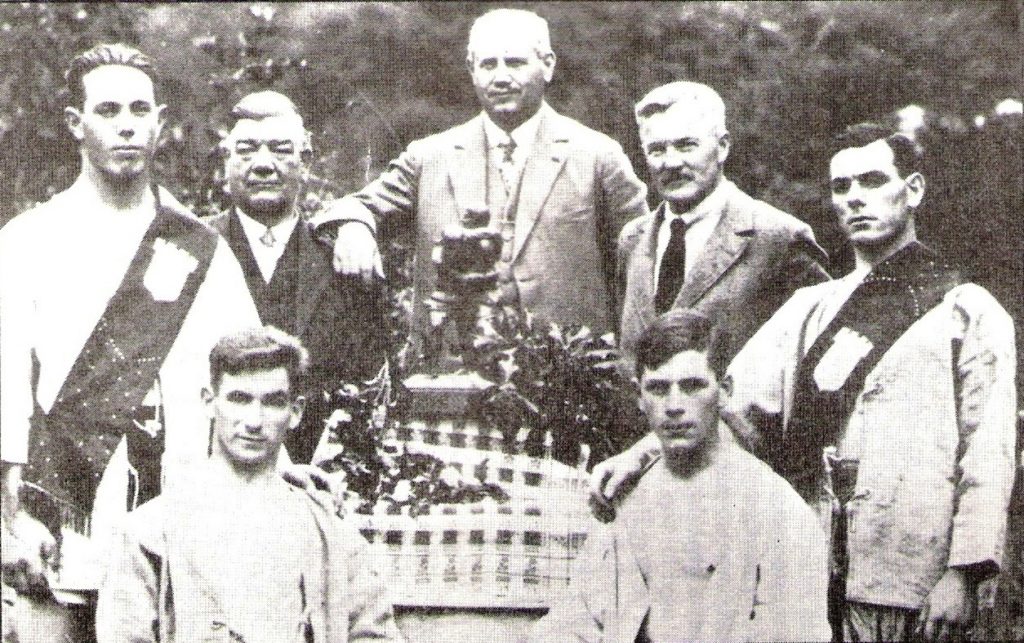
The Cornish wrestling team with their officials and French host at the first inter-Celtic wrestling tournament held in Quimperle, Brittany August 1928
Francis Gregory is standing on left with his winning sash
West Briton, 24 August 1928
In May 1925, following a spate of injuries at several tournaments and the fact that about 20 wrestlers had ceased wrestling due to the fear of injury and worries about what would happen to their families while they were not able to work, the newly-formed governing body, the Cornwall County Wrestling Association (CCWA), sought to insure injured wrestlers but none of the insurance companies that were approached were interested, although the majority of wrestlers thought an insurance scheme was a good idea. Consequently, the CCWA decided to continue with collections on the ground. The following year the CCWA decided at their AGM to establish a benevolent fund and to prevent injured wrestlers from begging, which often happened. This practice was thought by the governing body to give the sport a bad reputation and the rule which forbade begging at the ring, ‘by a wrestler, or on his behalf’, remained in the official rule book as late as the 1950s, together with four other related rules. In March 1926 at a CCWA meeting it was confirmed that an insurance company had agreed to insure a minimum of 100 wrestlers at six shillings and six pence each and one guinea for each affiliated committee.[8]
Several reports throughout the period under study, such as those for Helston in 1825, 1826 and 1827,[9] felt it necessary to point out that no accident had occurred. Again in May 1872 the West Briton reported that at a tournament in Lanivet, ‘No accident of any kind occurred to mar the sports so well patronised’. Similarly, at a tournament in Truro in June 1938, F.R. Pascoe, who presented the prizes mentioned in his closing address that no wrestler had been hurt. It is not clear whether these comments were made because it was unusual, or if organisers of tournaments were attempting to portray wrestling in a good light.
Given the prevalence of Cornish wrestling in Cornwall in the period 1800 to 1939, albeit even with a decline at the end of the nineteenth century, and the numbers of wrestlers who entered tournaments, coupled with the hardness of the grass surfaces in high summer and the sheer physicality involved, there were remarkably few serious injuries, bar the one death! There were 19 types of injury reported and a total of 170 injuries in the entire period.
Article © of Mike Tripp
References
[1] West Briton, 14 August 1924; West Briton, 8 August 1935.
[2] West Briton, 31 July 1829; West Briton, 6 August 1925; West Briton, 3 August 1933; West Briton, 14 August 1919.
[3] West Briton, 13 August 1931; West Briton, 10 August 1933; West Briton, 25 June 1936.
[4] West Briton, 13 Augut 1931; West Briton, 10 May 1928’; T. Salmon, The First Hundred Years: The Story of Rugby Football in Cornwall, (Illogan, 1983) P. Purser, Kent Walton http://www.guardian.co.uk/media/2003/sep/08/broadcasting.guardianobituaries/
[5] Guy Jaouen and Matthew B. Nichols, Celtic Wrestling The Jacket Styles: History of An Old Sport and Techniques of Cornu-Breton Wrestling, (Corsier-sur-Vevey, Fédération Internationale des Luttes Associées, 2007); West Briton, 6 August 1936.
[6] Douglas Williams, ‘Thomas Gundry “Champion Wrestler of the World”’, Cornish Banner, no. 71 (February 1993), 18-19.
[7] Cornish Guardian, 23 April 1936.
[8] West Briton, 14 May 1925; West Briton, 15 October 1925; West Briton, 11 February 1926; West Briton, 18 March 1926; Cornish Wrestling Association, Rule Book (date unknown but believed to be 1950s); West Briton, 25 March 1926.
[9] West Briton, 9th September 1825; 6th October 1826; and 14th September 1827.

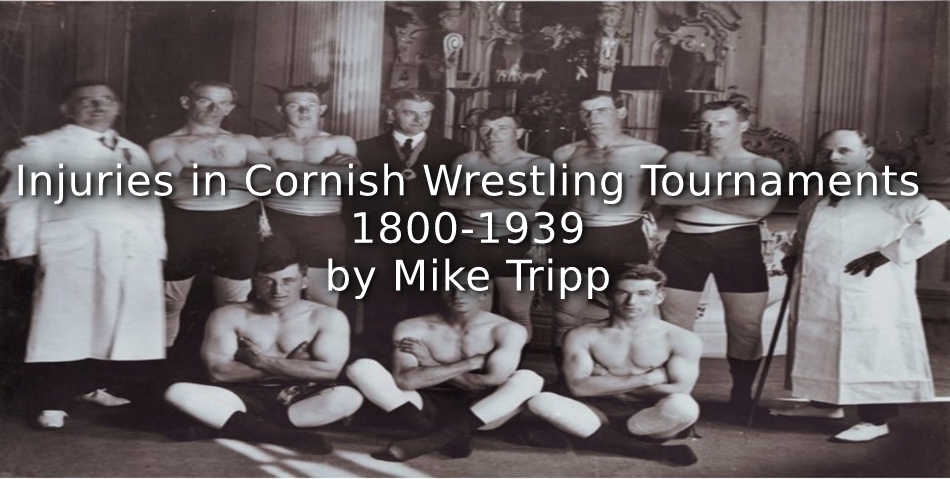
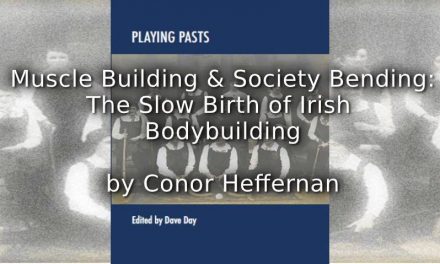
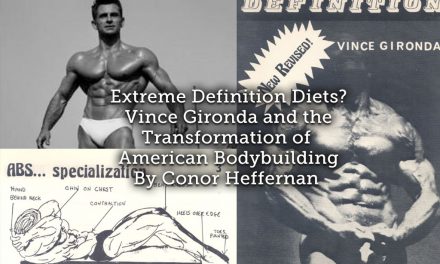
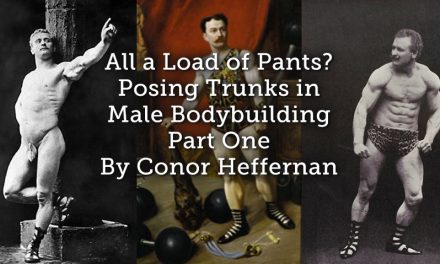
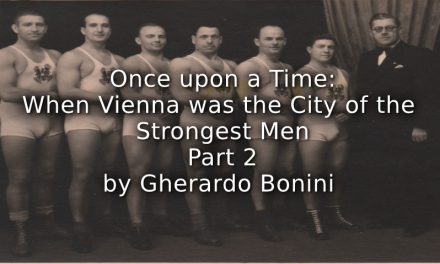
Hi Mike
I’m looking forward to the wrestling book!!!!!!